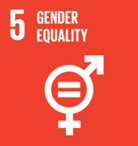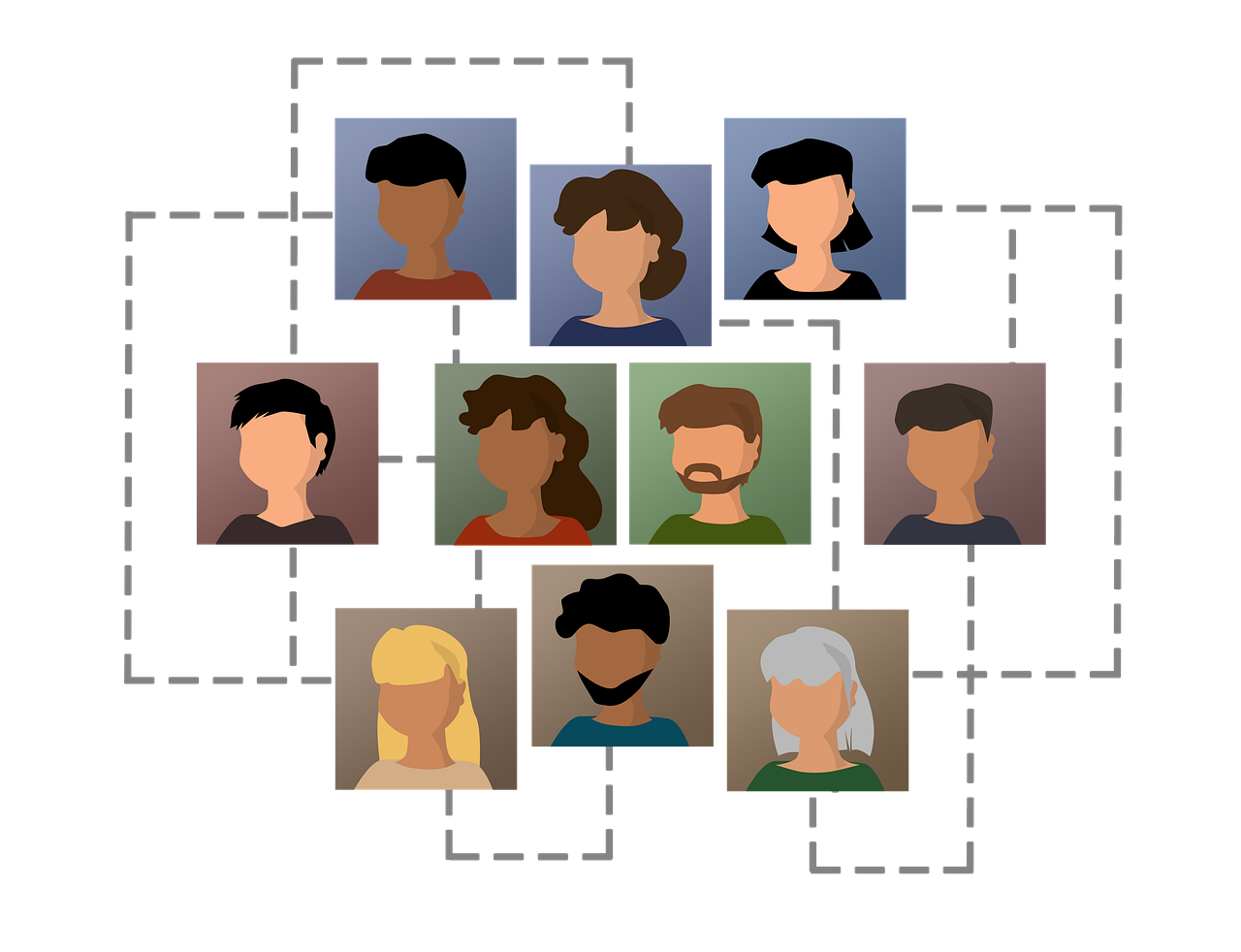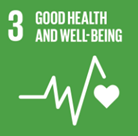From discovery to real-world applications — a Q&A with Dr Florence Bietrix
Published in Biomedical Research

Earlier this year, Dr Florence Bietrix, PhD, stepped into the role of Section Editor at Journal of Translational Medicine to lead the Translational Process section.
In this Q&A, Dr Bietrix and I discuss her research focus, the importance of the translational process, and how it can significantly contribute to achieving the Sustainable Development Goals.
Please tell us about yourself.
 I’m a translational scientist by training and by heart. I earned my PhD in physiopathology in Toulouse, where I began my scientific journey by exploring the mechanisms behind intestinal cholesterol absorption and underlying cardiovascular disease. From there, my career evolved in France and the Netherlands, gradually shifting from hands-on laboratory work to broader strategic and enabling functions.
I’m a translational scientist by training and by heart. I earned my PhD in physiopathology in Toulouse, where I began my scientific journey by exploring the mechanisms behind intestinal cholesterol absorption and underlying cardiovascular disease. From there, my career evolved in France and the Netherlands, gradually shifting from hands-on laboratory work to broader strategic and enabling functions.
Over time, I became increasingly passionate about the translational process; how to move biomedical discoveries from the lab into real-world healthcare applications. Women’s health, in particular, is a domain that has been resonating lately deeply with me. As a scientist, a woman and a mother, I’ve observed how biological sex and gender are too often overlooked in research and care, leading to diagnostic delays, inadequate treatments, and safety risks for women.
Since 2012, I’ve had the privilege of working with EATRIS, initially as Scientific Programmes Manager and now as Deputy Director to the Executive Board. This role enables me to help shape a pan-European translational ecosystem that prioritises quality, inclusivity, and patient benefit.
While I’ve learned a great deal from formal mentors throughout my career, I’ve come to see my colleagues as my everyday mentors. Their unwavering dedication to the translational mission, creativity, and collaborative spirit continually inspires and challenges me. It’s an honour to be part of a community that so fully lives the values of translational science.
Could you tell us more about EATRIS? What are the main goals of the organization?
![]() EATRIS is the European infrastructure for translational medicine.
EATRIS is the European infrastructure for translational medicine.
We bring together resources and services for research communities to translate scientific discoveries into benefits for patients. EATRIS is what is known as an ‘ERIC’, which is a non-profit European Research Infrastructure Consortium. This specific legal form is designed to facilitate the joint establishment and operation of research infrastructures of European interest.
What makes EATRIS unique is the breadth and depth of its consortium. With more than 150 academic institutions across 15 countries, we offer access to world-class capabilities in areas such as biomarkers, advanced therapies, imaging and tracing, small molecules, vaccines, and regulatory science. The consortium helps researchers de-risk their projects and make informed decisions at each stage of the Translational Medicine value chain.
Beyond technical access, EATRIS is also a community of practice. We invest in capacity building through dedicated training and mentoring programmes aimed at supporting early-career researchers and project leaders. Helping researchers understand the requirements for validation, regulatory alignment, and patient-centric design is central to our approach.
In addition to your work with EATRIS, you are also leading the Translational Process section in Journal of Translational Medicine. Could you talk to us about what the section aims to achieve and how it can help to improve the accessibility of meaningful health outcomes?
The Translational Process section was created to spotlight one of the most critical yet often underreported aspects of biomedical innovation: the journey from discovery to real-world application. Building on the vision of Prof. Marina Boccardi, who founded the section, our goal is to provide a space where the scientific community can share insights, tools, and experiences that help improve the effectiveness, efficiency, and accountability of this journey.
We welcome articles that examine current translational efforts and how they can benefit from clearly defined, shared methodologies such as frameworks for target validation, models for early health technology assessment, stakeholder engagement strategies, or quality assurance protocols throughout development. We especially encourage contributions that explore how these methodologies can be co-developed with regulators, clinicians, industry, patients, and other stakeholders to reflect real-world constraints and decision-making needs.

At its core, the section promotes a translational ecosystem grounded in quality, reproducibility, and impact. Science that cannot be validated or that lacks methodological transparency often leads to wasted resources, misdirected follow-on efforts, and ultimately, delays in patient benefit. By curating contributions that interrogate these risks and offer solutions, we aim to reduce translational waste, and promote science that is not only innovative, but sustainable and trustworthy.
How does the Translational Process section contribute to the Sustainable Development Goals?
Target 3.4 of the Sustainable Development Goals (SDG3) calls for a one-third reduction in premature mortality from non-communicable diseases by 2030. Our section contributes by advancing high-quality translational science that accelerates early detection, personalized intervention, and implementation of evidence-based strategies.

Moreover, we actively promote research that addresses sex-based health disparities, which are often underexplored. Diseases such as cardiovascular conditions, autoimmune disorders, and neurodegenerative illnesses frequently present differently in women yet women remain underdiagnosed and underserved.

We also feature studies that explore systemic innovations, such as multidisciplinary care teams and AI-enhanced diagnostics, with a critical lens on their performance across diverse patient groups. By encouraging research that interrogates inclusivity, equity, and real-world applicability, we aim to contribute not only to SDG 3.4 but also to SDG 5 (Gender Equality) and SDG10 (Reduced Inequalities).
What are some of the major challenges facing the translational process?
One of the biggest challenges is fragmentation. Researchers are often working in silos whether across disciplines or institutions and may not have access to the tools or expertise they need to move their project forward.
Another issue is that certain key areas like regulatory planning or reproducibility don’t always get the attention they deserve, especially in early-stage research. These are vital for successful translation, but they’re not always well supported in traditional academic structures.
At EATRIS, we see how even promising projects can run into difficulties if these pieces aren’t addressed early. That’s why we place a lot of emphasis on mentoring, training, and helping researchers think ahead about the full development pathway.
What are your hopes for the future of translational process management?
 My hope is for a future in which translational medicine is not only efficient and evidence-based, but also inclusive, sustainable, and anchored in societal values. That means moving toward a model where patients and citizens are actively involved in shaping health research and innovation not just as participants, but as co-creators of solutions that reflect their lived experiences and real-world needs.
My hope is for a future in which translational medicine is not only efficient and evidence-based, but also inclusive, sustainable, and anchored in societal values. That means moving toward a model where patients and citizens are actively involved in shaping health research and innovation not just as participants, but as co-creators of solutions that reflect their lived experiences and real-world needs.
We also need to do better in ensuring that innovations are accessible and affordable, especially for people living with neglected and rare diseases, who are often left behind by traditional development models.
Gender equality is part of this too. We need more inclusive research that takes women’s health seriously and designs studies with sex and gender in mind, not just for fairness, but because it leads to better science.
And finally, I hope we continue to focus on sustainability supporting science that’s transparent, reproducible, and capable of delivering long-term value for patients and health systems. Small improvements in how we design and deliver research can make a big difference over time.
Read the latest articles from the Translational Process section of Journal of Translational Medicine!
Follow the Topic
-
Journal of Translational Medicine

Journal of Translational Medicine is an open access journal publishing articles focusing on information derived from human experimentation so as to optimise the communication between basic and clinical science.
Related Collections
With Collections, you can get published faster and increase your visibility.
Harnessing Innovative Machine Learning Techniques to Combat Drug Resistance in Solid Tumors
In recent years, the challenge of drug resistance in solid tumors has emerged as a significant barrier to effective cancer treatment, often leading to treatment failure and poor patient outcomes. As traditional therapeutic approaches struggle to overcome this hurdle, there is a growing interest in leveraging innovative machine learning techniques to enhance our understanding of drug resistance mechanisms and improve therapeutic strategies. This article collection aims to gather cutting-edge research that explores the intersection of machine learning and oncology, focusing on how advanced algorithms can be applied to predict drug resistance, optimize treatment plans, and ultimately foster personalized medicine approaches in cancer care. By fostering interdisciplinary collaboration and sharing novel insights, this collection seeks to pave the way for transformative advancements in the fight against cancer.
This article collection explores integrating advanced machine learning methodologies—including ensemble learning, deep learning, reinforcement learning, explainable AI, and quantum computing—in understanding and overcoming drug resistance in solid tumors. We invite contributions highlighting novel algorithms, examples of innovative machine learning technique implementation, and interdisciplinary approaches, ultimately leading to improved therapeutic outcomes and enhanced patient care in oncology.
opics of Interest
The collection welcomes original research, reviews, commentary and methodology articles on the following topics:
• Ensemble Learning Techniques;
• Applications in predicting drug resistance profiles;
• Comparative studies of ensemble methods versus traditional approaches;
• Deep Learning in Oncology;
• Neural network architectures for tumor characterization;
• Image analysis and interpretation for drug response prediction;
• Reinforcement Learning;
• Adaptive treatment strategies using reinforcement learning;
• Simulation models for drug resistance evolution;
• Explainable AI;
• Methods for interpreting machine learning models in clinical settings;
• The role of explainability in improving treatment outcomes;
• Quantum Computing Applications;
• Quantum algorithms for optimizing drug discovery processes;
• Examples of quantum-enhanced machine learning techniques in oncology.
All submissions in this collection undergo the journal’s standard peer review process. Similarly, all manuscripts authored by a Guest Editor(s) will be handled by the Editor-in-Chief. As an open access publication, this journal levies an article processing fee (details here). We recognize that many key stakeholders may not have access to such resources and are committed to supporting participation in this issue wherever resources are a barrier. For more information about what support may be available, please visit OA funding and support, or email OAfundingpolicy@springernature.com or the Editor-in-Chief.
This collection supports and amplifies research related to SDG 3: Good Health and Well-Being.
Publishing Model: Open Access
Deadline: Nov 30, 2026
Regeneration and Remodeling after Brain Injury: Implications for Stem Cell Therapy
Brain injury/damage, including brain trauma or stroke, has a high morbidity and mortality, and is often accompanied by severe neurological deficits post injury. Despite advances in therapeutics targeting brain repair and remodeling, positive clinical outcome is still a challenge and there continues to be a tremendous unmet clinical need for patients. Currently, transplantation of stem cells derived from several tissue sources has been recognized as very promising biologic-based therapy for regeneration and remodeling after brain injury, for instance, neural stem cells (NSCs), mesenchymal stem cells (MSCs) and induced pluripotent stem cells (iPS cells).
Upon brain injury, oxidative stress and inflammatory response are two early events in the biological cascade following brain injury. These two events are work synergistically and directly trigger the process of autophagy. Appropriate autophagy would contribute to brain recovery by reducing oxidative stress and inflammatory responses, whereas autophagy dysfunction exacerbates brain injury. Various studies have demonstrated that stem cells and their regenerative properties could impact tissue damage following brain injury in the following aspects: cellular replacement, secreting neurotrophic factors, and mitochondrial transfer. This collection aims to discuss the recent progress on stem cell therapy for brain injury, specifically studies elucidating the mechanisms in terms of oxidative stress, mitochondrion dysfunction and autophagy.
The collection welcomes all original and review articles on topics such as:
1. Stem cell therapy for brain repair after brain injury/damage, including brain trauma or stroke;
2. Underlying mechanisms upon stem cell replacement for brain injury, including cellular/tissue regeneration/ remodeling, oxidative stress, inflammatory response and autophagy;
3. Immune-response problems following stem cell therapy for brain injury;
4. Mitochondrial role after stem cell therapy for brain injury;
5. Detection of stem cell therapy for brain injury using imaging techniques, i.e. brain magnetic resonance;
6. Application of new tools, techniques, or models for studying stem cell viability or survival after implantation, such as organoids.
All submissions in this collection undergo the journal’s standard peer review process. Similarly, all manuscripts authored by a Guest Editor(s) are handled by the Editor-in-Chief. As an open access publication, this journal levies an article processing fee (details here). We recognize that many key stakeholders may not have access to such resources and are committed to supporting participation in this issue wherever resources are a barrier. For more information about what support may be available, please visit OA funding and support, or email OAfundingpolicy@springernature.com or the Editor-in-Chief.
This Collection supports and amplifies research related to SDG 3, Good Health and Well-Being.
Publishing Model: Open Access
Deadline: Dec 19, 2025





Please sign in or register for FREE
If you are a registered user on Research Communities by Springer Nature, please sign in